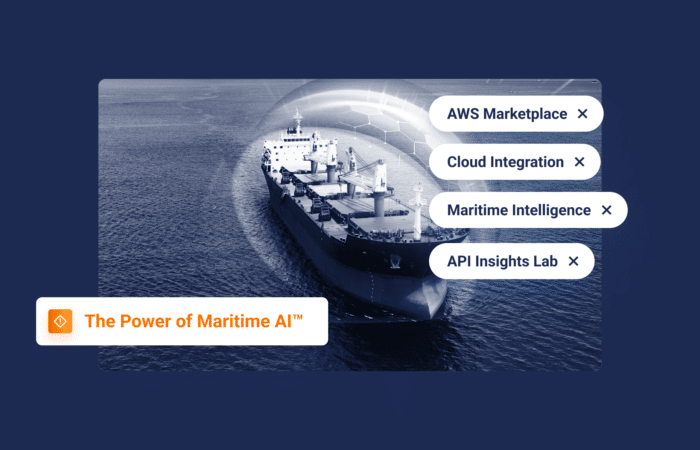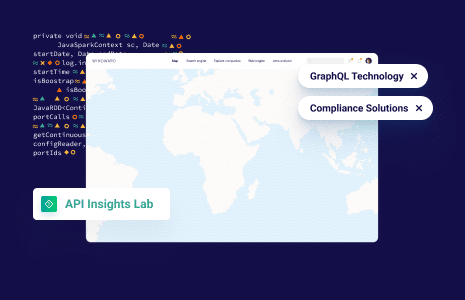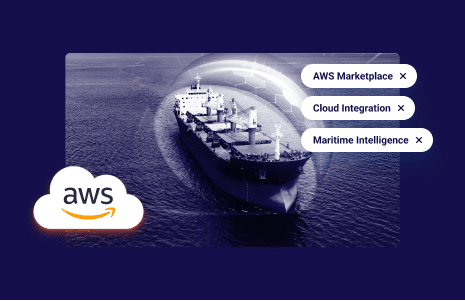What’s inside?
By Jonathan Ran, Domain Analyst, Windward
Mapping ports and terminals is critical to accurately measuring trends related to port calls and understanding congestion levels. It allows for better planning and smarter decision-making throughout the different phases of a shipment. This blog post, the latest in our AI series, will:
- Define the relevant terms
- Explain the advantages of using geofencing technology for mapping
- Look at the importance of geofencing for determining transit times
It’s important to note from the start that deep learning algorithms must be built upon accurate data, otherwise the model will always be off. Just as it would be impossible for even Albert Einstein to learn Spanish via a German teaching app, even the most advanced deep learning models cannot make accurate predictions based on the wrong data. The opposite is of course also true – even the most relevant and refined data cannot save flawed deep learning models. Accurate geofencing is crucial for the successful and accurate prediction of ETAs.
Getting on the Same Page (Terminology Synch)
Before proceeding to the best way to map ports and port calls, let’s quickly ensure we are all using the terminology in the same way…
Geofencing Port Areas
Creating a digital representation of a port area allows automatic tracking of events within the mapped area, based on the geolocation of vessels as transmitted via AIS. With over 700 container ports globally, it is a long and tedious task, but it results in greater accuracy and visibility.
Defining Port Calls
Once port areas are accurately geofenced, as described above, it is possible to track the movements of vessels in and out of those areas. But counting every crossing of the geofenced area as a port call would result in a lot of false positives (i.e. port calls that aren’t actually port calls, but rather a vessel passing close to the port docking area and continuing on to its destination, without berthing at the port). This is especially true in crowded areas, such as the ports of Shanghai and Ningbo, or LA/LB. It is crucial to set a minimum amount of time that the vessel spends within the geofenced area to qualify as a port call.
Port Waiting Areas?
The port waiting area (PWA) is the area outside the port where vessels can anchor. These areas are more dynamic and less defined than ports, as they are essentially areas where most vessels decide it’s safe to anchor while waiting for their berthing slot, without blocking the pathway of other vessels. PWAs are also sometimes used by vessels that depart the port and drift outside before starting the next leg of their journey.
Mapping and geofencing port waiting areas requires a deep level of industry expertise to understand how vessels behave, as well as extensive historical data to point to where vessels usually wait outside one port versus another. It is one of the important factors that allow for the accurate monitoring of changing congestion levels in real-time.
The Downside of Manual Updates
Without this technology, the process is manual, meaning shippers and freight forwarders have two options:
- They will need to wait for the port to update the information on their website, and then the carriers must check the port website to see which ships have arrived, or called port. The freight forwarders or shippers will then need to update their website, or communicate this information with the customer. This process is time-consuming, inefficient, and occasionally inaccurate – miscommunications or a failure to communicate can lead to an incomplete understanding.
- Call the port directly and ask if the specific vessel has arrived, and then update the customer. Again, this is a time-consuming process requiring dedicated employees.
Geofencing Allows for Determining Congestion Based on Transit Times
Measuring congestion at ports is often reduced to counting the number of vessels waiting outside a port. But Windward’s experience has taught us that it is far from being the most accurate methodology. For instance, measuring just congestion omits the many vessels that slow-steam their way to their next destination, if a port is known to already be congested, or to save on fuel costs. Transit times to ports are measured from when a vessel leaves the geofenced area of the port of origin – at a specific time and date – until it enters the geofenced area of the destination port.
For example, in December 2021, at the peak of the widely covered U.S. West Coast congestion, it took 29 days to get from China to Los Angeles. In August 2022, it took only 16 days on average to get from China to Los Angeles.
Clearly, Los Angeles didn’t move closer to Shanghai in August, so what caused this change in transit time? Longer wait times in December for vessels to berth. Whether the vessels – which took nearly twice as long to berth in LA – waited outside the port or sailed at lower speeds to get there, looking at the transit times accounted for all of them.
Another advantage of geofencing port areas is the ability to determine port efficiency. By examining port call durations, which measures when exactly a vessel arrived at and departed from the port, the average turnover time at a specific port can be defined. When the turnover time increases, it means that the port is less efficient. When combining the data from the port waiting area, transit times, and port call duration, it can be determined – in the most accurate way – whether port congestion is on the rise or not.
Stay tuned for our next blog in this series, which will discuss the captain’s next destination report, and why it’s so important to standardize this text.

















